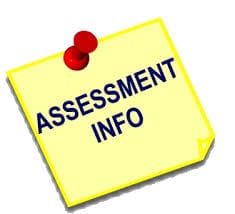Here is a selection of short story openings. Have a read and see if you can work out how these openings try and interest the reader.
At Seventeen- Sheila Morehead
The youth shivered as the cool breeze flicked around his body and blew through his sea-bleached hair. His eyes, darkly blue as the glowering sky above, turned continually to the heaving surf.
There was no one else on the windswept beach. Inside his mind a voice was talking to him and that voice was his own soul and it was all the companionship necessary to him.
Listen to the End- Tony Hunter
A flurry of wind sent the brown leaves tumbling end over end ahead of her along the dark, glistening pavement. Thin, cold drizzle, driven by the wind wrapped a clammy embrace round her hurrying figure and swirls of mist danced beckoningly around the street lamps, transmuting their normally friendly beacons into baleful yellow eyes. The tall Victorian houses frowned down disapprovingly on the small figure in the bright red raincoat as if the bright splash of colour offended their staid and sombre tastes.
She quickened her pace, head bent, dark hair plastered damply across a pale face, heels beating out a staccato rhythm that took off with the promise of an echo only to be swallowed by the all-pervading mist, thickening now as it rolled up from the river. The paper bag of groceries, dampened by mist and rain, threatened once more to disgorge its contents and she shifted the grip of her arms, clutching it even more tightly to her breast carrying it before her like a shield against the dark.
A Sound of Thunder- Ray Bradbury
The sign on the wall seemed to quaver under a film of sliding warm water. Eckels felt his eyelids blink over his stare, and the sign burned in this momentary darkness:
TIME SAFARI, INC.
SAFARIS TO ANY YEAR IN THE PAST.
YOU NAME THE ANIMAL.
WE TAKE YOU THERE.
YOU SHOOT IT.
Warm phlegm gathered in Eckels’ throat; he swallowed and pushed it down. The muscles around his mouth formed a smile as he put his hand slowly out upon the air, and in that hand waved a check for ten thousand dollars to the man behind the desk.
“Does this safari guarantee I come back alive?”
The Murderer- Ray Bradbury
Music moved with him in the white halls. He passed an office door: “The
Merry Widow Waltz.” Another door: “Afternoon of a Faun.” A third: “Kiss Me Again.” He turned into a cross corridor: “The Sword Dance” buried him in cymbals, drums, pots, pans, knives, forks, thunder, and tin lightning. All washed away as he hurried through an anteroom where a secretary sat nicely stunned by Beethoven’s Fifth. He moved himself before her eyes like a hand. She didn’t see him.
His wrist radio buzzed.
“Yes?”
“This is Lee, Dad. Don’t forget about my allowance.”
“Yes, son, yes. I’m busy.”
Lamb to the Slaughter- Roald Dahl
THE ROOM WAS WARM and clean, the curtains drawn, the two table lamps alight – hers and the one by the empty chair opposite. On the sideboard behind her, two tall glasses, soda water, whisky. Fresh ice cubes in the Thermos bucket. Mary Maloney was waiting for her husband to come home from work. Now and again she would glance up at the clock, but without anxiety, merely to please herself with the thought that each minute gone by made it nearer the time when he would come. There was a slow smiling air about her, and about everything she did. The drop of the head as she bent over her sewing was curiously tranquil. Her skin – for this was her sixth month with child – had acquired a wonderful translucent quality, the mouth was soft, and the eyes, with their new placid look, seemed larger, darker than before.
When the clock said ten minutes to five, she began to listen, and a few moments later, punctually as always, she heard the tires on the gravel outside, and the car door slamming, the footsteps passing the window, the key turning in the lock. She laid aside her sewing, stood up, and went forward to kiss him as he came in.
‘Hullo, darling,’ she said, ‘Hullo,’ he answered.
You Are Now Entering the Human Heart- Janet Frame
I looked at the notice. I wondered if I had time before my train left Philadelphia for Baltimore in one hour. The heart, ceiling high, occupied one corner of the large exhibition hall, and from wherever you stood in the hall, you could hear it beating, thum-thump-thum-thump. It was a popular exhibit, and sometimes, when there were too many children about, the entrance had to be roped off, as the children loved to race up and down the blood vessels and match their cries to the heart’s beating. I could see that the heart had already been punished for the day—the floor of the blood vessel was worn and dusty, the chamber walls were covered with marks, and the notice “You Are Now Taking the Path of a Blood Cell Through the Human Heart” hung askew. I wanted to see more of the Franklin Institute and the Natural Science Museum across the street, but a journey through the human heart would be fascinating. Did I have time?


